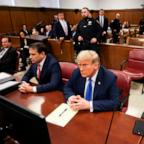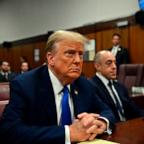Crisis Averted: What If the Bomb Had Gone Off?
What would have happened in Times Square?
May 3, 2010— -- On any other night, it was a perfect time to be in Times Square.
But on Saturday night, a potential catastrophe was aimed at one of the most crowded places in the world.
With unseasonably mild temperatures, more than 100,000 visitors packed into the area; side and cross walks were jammed. Then, suddenly, here in the thickest part of the square, everyone had to move.
Whistles and alerts from officers rang out and sent people scurrying into stuffed hotel lobbies and side streets ... anywhere but here.
Until the wee morning hours, everyone was waiting for a moment, one that thankfully never came.
On the corner of 45th Street and Broadway, a Nissan Pathfinder, laden with two different bombs, was smoldering. Whether by accident or on purpose, it was positioned to do maximum damage, according to Kevin Barry, who has spent 20 years investigating bombs for the NYPD.
"This was to create mass casualty," he said.
Thankfully that didn't happen, but the materials in the car had lethal potential and are easy to find. Propane tanks are as easy to find as a barbeque and though the fertilizer used here was not the explosive ammonium nitrate kind, stronger types are found in many garden centers.
The hardest part to find are the M-88 fire crackers that police said were supposed to be the detonators. They are legal in many states, as near to New York City as Pennsylvania.
These bombs were left in a location that reveals a harrowing opportunity.
"Fragmentation would've gone out in all directions," Barry said. "A fire wall would've encompassed most of this intersection and people would've been knocked down and hit with fragmentation. It would've been like someone opened up with an AK-47 or several automatic weapons and just started spraying bullets."
Based on the amount of bomb material, if everything had worked as planned, as many as 500 people could have been killed or injured, according to Barry, who said the bombs were designed as a one-two punch: the fertilizer was held in a metal locker designed to create explosive pressure once detonated. When it burst, fiery fragments of the locker and the car would rocket out the back window at speeds approaching 12,000 miles an hour.




